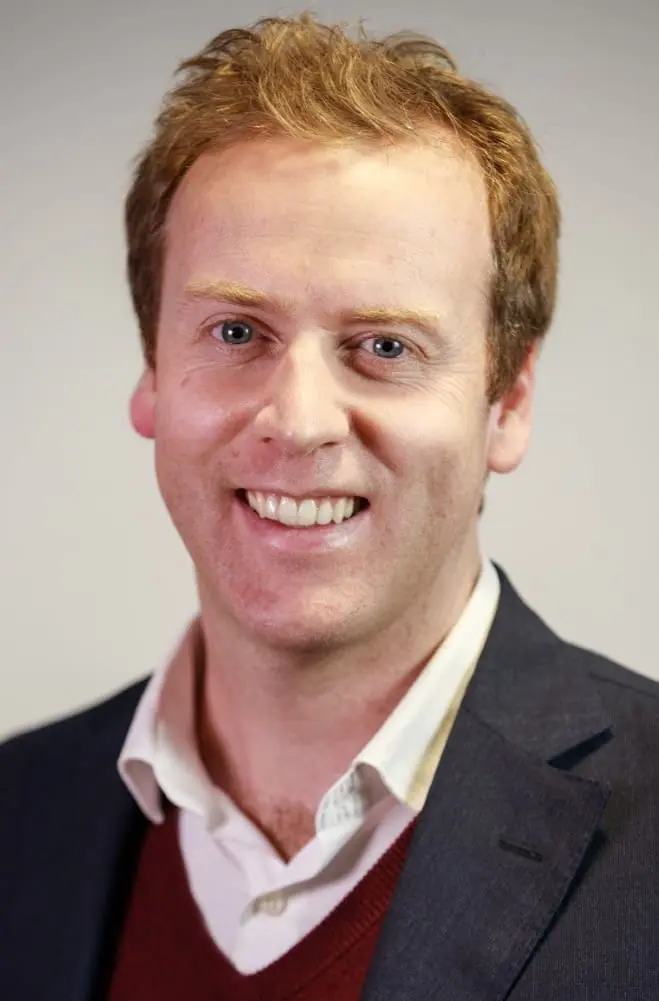Bone-anchored protraction reduces the need for orthognathic surgery.
Occasionally, a journal publishes a paper that will likely be recognised as a “Classic.” This UK-based team has done an excellent trial examining the effectiveness of bone-anchored protraction treatment. Importantly they report outcomes relevant to both clinicians and our patients. This research also shows that it is possible to carry out a low-cost, long-term study. I cannot praise this team enough.
Padhraig Fleming has provided us with this summary post about this study.
Class III Correction: A Bump from BAMP?
We have had a wealth of research examining our ability to modify growth in Class II malocclusion. High-quality prospective studies seem to suggest that our lasting effect on anterior-posterior skeletal growth is modest—if it does indeed exist. More recent research by Nicky Mandall’s group in the U.K. also suggests that the long-term skeletal impact of protraction facemasks in young children is very limited. However, our quest to modify skeletal growth continues. Increasingly, the adjunctive use of mini-screws and mini-plates is being explored to stretch the limits of orthodontic change.
The use of bone-anchored maxillary protraction (BAMP) has shown promise in previous retrospective studies with evidence of positive skeletal effects, at least in the short term. Moreover, while some suggest that protraction facemasks may be more potent in pre-adolescents, BAMP is advocated in a slightly more mature cohort.
It was exciting to see the recent publication of this excellent multi-centred study in the Journal of Orthodontics.

Mandall et al. (2024)
Journal of Orthodontics: Advance access: https://doi.org/10.1177/14653125241255139
What did they do?
They conducted a randomised controlled trial involving two groups and 57 participants.
Participants:
57 White Caucasian children aged 11–14 years with Class III skeletal pattern associated with maxillary retrusion, three or more incisors in crossbite in retruded contact position, and erupted lower canines and first premolars.
Interventions:
They randomly allocated patients to either BAMP (28) or untreated control (29). They did this electronically with stratification for gender and variable block size to ensure the groups were relatively equal. Deep overbites were managed with adjunctive use of a lower removable appliance with occlusal acrylic coverage.
The clinical endpoint was a positive overjet of 1 mm or more. If correction did not occur, the patients continued with their elastic wear until 18 months after registration. At this point they removed the plates. Between 18 months (DC2) and 3 years (DC3), an upper fixed appliance was placed where indicated.
Outcome measures:
The primary outcome measure was the perceived need for orthognathic surgery, based on the evaluation of blinded records (clinical images, models, and radiographs) by three expert raters. They coupled this subjective assessment with an objective evaluation of dental and skeletal change and a measure of psychological impact.
What did they find?
The authors undertook an intention-to-treat analysis accounting for drop-outs. They assessed the need for orthognathic surgery at 15.6 to 15.9 years. The panel felt that Fewer patients (P= 0.04) in the BAMP group (48%) required surgery than in the control group (75%), representing a 27% reduction in subjective need for surgery.
Regarding the objective outcomes, most between-group differences did not exceed 1mm or 1 degree. These were, therefore, considered to be clinically insignificant. In terms of skeletal effect, ANB increased by 1.2 degrees in the BAMP group during treatment (P= 0.004). However, this effect was diluted 18 months later (to 0.7 degrees), with statistical significance lost (P= 0.16).
What about the dental effects? Again, the overjet improved during the treatment phase with BAMP (by 1.5 mm relative to the control). This difference was also reduced by T3, albeit to a lesser extent than the skeletal effect (to 1mm; P= 0.06). Oral health-related quality of life was statistically better in the treated group, although this was attributed to the confounding effects of alignment with fixed appliances.
Of interest, the mean operating time was 88 minutes for placement, with a plate infection rate of 11% (all related to maxillary plates). Eight patients returned to the theatre for the replacement of infected plates.
What did I think?
This study was excellent. However, I knew this research was happening and have patiently waited for the results for some time. The findings are hugely interesting. Notably, the effects observed in this study were lower than those reported in previous retrospective studies. We have seen this before in studies relating to growth modification and papers considering fixed appliance mechanics. Moreover, the pattern observed in the long-term functional studies is also mirrored, whereby early growth acceleration is eroded over time, while occlusal changes seem to be preserved to a greater extent.
The design and methodology of this study are exceptional. Clinical trials are difficult to conduct, and samples are often hard to come by. The multi-centred approach helped to overcome this. However, a great deal of effort and coordination are needed to see this through. It was, therefore, great to see a really useful end product.
Notably, the findings mirror this group’s previous research involving protraction facemask therapy. The present study included an older age group. I am aware that some recommend an arbitrary upper age threshold for successful protraction facemask therapy (of 10-11 years). I am not sure that the evidence for this is compelling. Comparing the two studies makes me wonder how much additional benefit is derived from the skeletal anchorage. Of course, a third group or, indeed, a further study would be required to answer this. This excellent study has left me wanting more!
Objective measurements
A further interesting finding was the lack of effect of treatment on occlusal plane rotation. Previous work has suggested that a protraction facemask profoundly affects the occlusal plane. Less occlusal plane change with BAMP is, of course, intuitive as the elastics are run between the plates rather than involving the dentition directly. While occlusal plane effects do not represent skeletal change, they significantly contribute to the anterior correction we obtain with various appliances. It is, of course, difficult to quantify this effect.
Finally, the subjective evaluation method could be criticised as it was confined to three professionals. It is again interesting that the relatively small objective differences translated into the 27% reduction in the perceived need for surgery, particularly given the minor skeletal differences. This finding may reflect our professional bias as orthodontists – we often focus on the occlusion – perhaps myopically! It would be nice to see whether a group of lay raters reach similar conclusions after reviewing the clinical records.
What can we conclude?
In 11- to 14-year-olds with skeletal III discrepancy and multiple teeth in crossbite, BAMP may offer a reduced subjective need for orthognathic surgery. However, while BAMP may lead to a significant short-term skeletal effect, this impact is diluted over 3 years with the primary lasting effect being an improvement in overjet.

Professor of Orthodontics, Trinity College Dublin, The University of Dublin, Ireland

Professor of Orthodontics, Trinity College Dublin, The University of Dublin, Ireland
I think the major drawback of the study was that the authors assessed the need for orthognathic surgery a little prematurely, at the age of 15 years. Meanwhile, we are perfectly aware that in Class III subjects the mandibles may continue to grow up to the late teens/early 20s…
Were the subjects male or female. Very different growth profiles and potential.
It is great to see a good study that verifies the effectiveness of BAMP. Quite a feat to put together 2 groups and keep track of them over the time period and I salute the undertaking that this study represents.
I to am surprised by the the small change and the loss of correction after treatment. This has not been my experience in the 10 years and 75 cases of Bollard plates I have completed. There are 2 main difference between this study and my personal protocol. Those are 1) the starting age and 2) the length of time elastics are used. I find the response to treatment is variable after the age of 13 so I always try and get the plates started at or just before the recommended age of 11. (DeClerks recommendation) The age range at start of treatment of this study seems to be between the age of 11 and 14 with a mean of 12:9, which is quite late from my experience.
Also,the fact that 8 of 28 patients (28%) needed a maxillary plate replaced pushes the starting age out even further for those patients. Typically surgeons like to wait 6 week for bone to heal before replacing a plate which often means 3 months or more given scheduling variables. This is added to a typical “ramping up of force” that is recommended for Bollard plates, whereas the patient spends 3 months working up to the highest level of force. This pushes the “starting age” out even further.
Also, the loss of correction after the study period is not surprising given what we know about facial growth. When I use Bollard Plates, I leave them in until 3rd molars are removed. Sometimes I continue with full time wear after the initial 18 months, sometimes nights only, monitoring for traumatic occlusion on the anteriors as a sign of continued growth during that period.
I mention all of this not as a criticism of the study but rather as context for those reading this who have no experience with BAMP and might be discouraged by the seemingly minor results. The fact that they got the results they did given the age they started should be seen as near miraculous! Getting a positive ANB change in a Class 3 patient is like saying the water level at the beach decreased while the tide came in! Any positive change in a class 3 patient in treatment is a welcome change from the normal “it always gets worse”.
BAMP with Bollard Plates is a significant (and costly in the USA) procedure and I have found that following certain guidelines regarding factors mentioned above are important in getting the 5+ mm of facial change shown in many of the patients Hugo DeClerk published in his initial papers on this procedure. This paper supports that there is an otherwise unobtainable result from using BAMP which is an important and welcome step to helping this under utilized treatment gain wider acceptance.
I have been using this mechanics in patients (12- 19) for more than 10 year with great success.
Unfortnately, I do not have access to the full article.
I am curious about the post-treatment relationship of facial tooth structure and alveolar bone, and the long-term risk of moderate to severe recession and instability for these patients.
If pre and post treatment images are available, I should greatly appreciate someone sending them to me.
Colin RIchman DMD; [email protected]